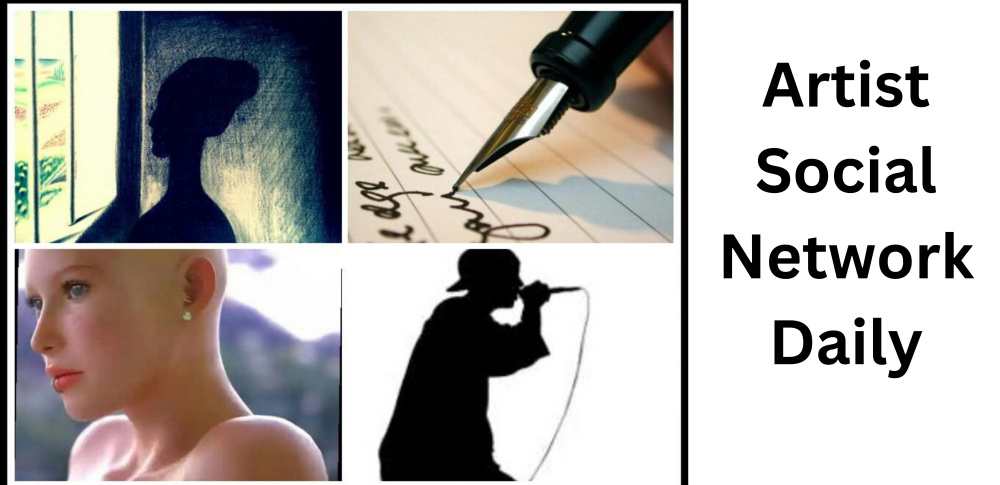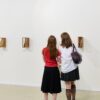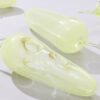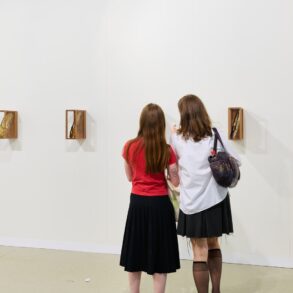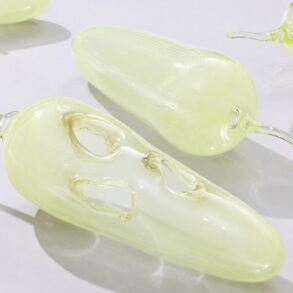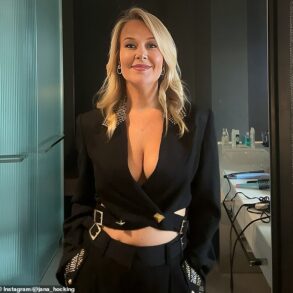A groundbreaking installation and performance art project, Womanhouse opened in Los Angeles in 1972 as part of the first Feminist Art Program, originally established by Judy Chicago at California State University, Fresno, and later expanded in collaboration with Miriam Schapiro at CalArts. The Feminist Art Program was supposed to occupy a new building, but at the start of the school year in 1971, the building was not yet ready. Faced with a lack of studio space, Chicago, Schapiro, and their students embarked on renovating an abandoned Victorian mansion in Hollywood previously marked for demolition, with the ambition of highlighting the ideological and symbolic conflation of women and houses.
After thoroughly cleaning, painting, sanding floors, replacing windows, and installing lights throughout the house’s 17 rooms, the artists transformed the domestic setting into an imaginative space that showed, exaggerated, and subverted women’s conventional social roles. Chicago painted a bathroom stark white, covered a shelf in gauze, and stuffed a trash bin until it overflowed with bloodied pads and tampons (Menstruation Bathroom). Sandra Orgel ironed identical sheets time and again (Ironing). Karen LeCocq and Nancy Youdelman created a performance entitled Lea’s Room in which the titular character sat in a pink bedroom applying makeup and removing it in an endless cycle, illustrating the pain of aging and the desperate process of trying to restore one’s beauty.
When Womanhouse opened, only women were allowed to enter on the first day, but over its monthlong exhibition, it welcomed more than 10,000 visitors. Over the course of the project, “the age-old female activity of homemaking was taken to fantasy proportions. Womanhouse became the repository of the daydreams women have as they wash, bake, cook, sew, clean and iron their lives away,” Chicago and Schapiro wrote in the introductory essay to the Womanhouse catalog.
This post was originally published on this site be sure to check out more of their content
